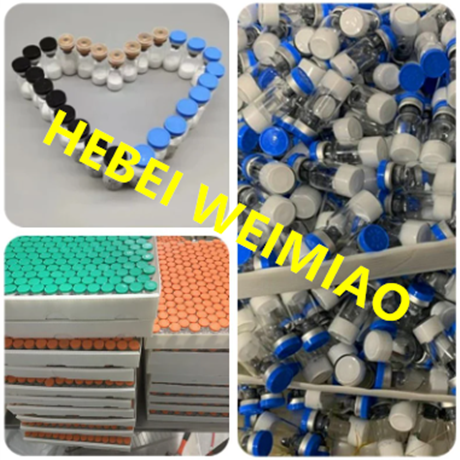
- +86-13363869198
- weimiaohb@126.com

Aug . 06, 2024 07:51 Back to list
Exploring Dermaseptin Cas 136212-91-4 Production Methods and Factory Standards for Quality Control
Dermaseptin A Promising Antimicrobial Peptide from Nature to Factories
Dermaseptin, a naturally occurring antimicrobial peptide (AMP) derived from the skin secretions of the Brazilian tree frog (Phyllomedusa), has garnered significant interest in the fields of medicine and biotechnology. With the CAS number 136212-91-4, dermaseptin exhibits potent antimicrobial properties against a broad spectrum of pathogens, making it a valuable candidate for various applications, including drug development, wound care, and food preservation. This article delves into the significance of dermaseptin, its production, and its potential impact on the industrial landscape.
The Importance of Antimicrobial Peptides
Antimicrobial peptides, like dermaseptin, serve as a crucial line of defense for many organisms, playing a vital role in the immune system. They are small proteins, typically 12 to 50 amino acids long, that can disrupt the integrity of microbial membranes, leading to cell lysis and death. In an era marked by increasing antibiotic resistance, the demand for alternative antimicrobial agents is more pressing than ever. Dermaseptin, with its unique mechanism of action, presents an innovative solution to combat infections caused by resistant bacteria, fungi, and even viruses.
Production and Synthesis of Dermaseptin
Traditionally, obtaining dermaseptin involves harvesting it from the skin of the Phyllomedusa frog, a process that raises ethical and sustainability concerns. To address these issues, researchers have developed synthetic methods to produce dermaseptin in the laboratory. This includes recombinant DNA technology, where genes encoding dermaseptin are inserted into bacterial or yeast cells, allowing for mass production. Additionally, solid-phase peptide synthesis techniques enable the creation of analogs of dermaseptin, which can be modified to enhance its properties, such as stability, efficacy, and specificity.
dermaseptin cas 136212-91-4 factories

Industrial Applications of Dermaseptin
The potential industrial applications of dermaseptin are vast and varied. In the pharmaceutical industry, its efficacy as an antimicrobial agent positions it as a candidate for new topical treatments for skin infections, including those resistant to standard antibiotics. Moreover, its ability to promote wound healing makes it a valuable component in bandages and ointments designed for chronic wounds and burns.
In the food industry, dermaseptin can serve as a natural preservative, extending the shelf life of products and reducing the need for synthetic additives. Its application in food safety can help prevent the growth of harmful bacteria, thereby enhancing public health outcomes.
Furthermore, dermaseptin's role in biotechnology could pave the way for innovative agricultural solutions. Its antimicrobial properties may be harnessed to create bio-pesticides that protect crops from fungal and bacterial pathogens, promoting sustainable farming practices without harming the ecosystem.
Conclusion
As the global community grapples with the challenges posed by antibiotic-resistant pathogens, the exploration and synthetic production of antimicrobial peptides such as dermaseptin hold immense promise. From its origins in the natural world to its potential applications in factories, dermaseptin embodies the intersection of biology and technology. Its diverse applications across medicine, food safety, and agriculture highlight the importance of continued research and development in this field. By harnessing the power of nature, dermaseptin could play a pivotal role in shaping a healthier, more sustainable future. As industries continue to evolve, the importance of innovative antimicrobial solutions like dermaseptin will undoubtedly remain at the forefront of scientific advancement.
-
GS-441524 White Liquid Production for Factories | AI-Optimized
NewsAug.02,2025
-
AI-Optimized CAS: 79099-07-3 Factories for High Yield
NewsAug.01,2025
-
Premium CAS 1451-83-8 Factory with GPT-4 Turbo | AI-Optimized
NewsJul.31,2025
-
Pharmaceutical Intermediates - AI-Optimized Synthesis & Purity
NewsJul.31,2025
-
Top CAS: 79099-07-3 Factories & Wholesale Supplier from China
NewsJul.30,2025
-
High-Quality GS-441524 for White Liquid Type Factories & Suppliers
NewsJul.29,2025